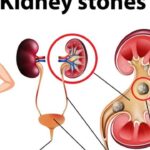When one thinks about heart health, one can see that the difference between heart attack and cardiac arrest could save his or her life. They are both emergencies of the heart but do not mean the same. However, the widespread misunderstanding of such situations can cause hesitation and inaccuracy of treatment.
In this article, we’ll define heart attack and cardiac arrest, outline their major differences, and most importantly understand why it is important to know them this way could potentially save lives.
What is a Heart Attack?
A myocardial infarction is another way to say heart attack. This happens when blood stops reaching part of the heart muscle. Usually, this occurs because plaque builds up in the coronary arteries. Plaque mostly contains fats, cholesterol, and similar substances. If part of the plaque breaks, a clot might block the blood. Without blood, the heart muscle in that area begins to die.
Signs of a heart attack include pain or discomfort in the chest. This can feel like pressure, tightness, or squeezing. The pain might spread to the arms, neck, back, or even the jaw.
Other signs include trouble breathing, sweating, throwing up, or feeling dizzy. But not everyone shows clear signs. Some people have no obvious symptoms, which is why heart attacks are often called a “silent killer.”
Many believe heart attacks strike suddenly with strong pain. True, right? Symptoms usually show up slowly. Weak signs might come first, then disappear. Noticing these signs early is really important. Why? Quick action improves the chances of recovery by helping limit damage to the heart and, in some cases, saving lives.
What Is Cardiac Arrest?
Cardiac arrest is an entirely separate entity. While a heart attack is a ‘circulation problem’ cardiac arrest is about an ‘electrical problem’. It is when the electrical activities of the heart go wrong. And this causes the heart to beat uncoordinated, which is called an Arrhythmia, and stops the function of pumping blood.
What this means is that the brain and the lungs and other organs that are useful cannot receive the oxygen they require, hence resulting to a fall.
Cardiac Arrest’s Signs and Symptoms are instant and radical. The affected individual may drop down, experience breathing cessation, and lose consciousness nearly simultaneously.
Most cases do not offer as a warning, chest pain which isn’t the case for healed infarction. Cardiac arrest can turn out to be fatal if medical intervention is not done in the shortest time possible.
One other term for cardiac arrest is sudden cardiac arrest (SCA) since it usually happens without any signs. The high-pitched and disorganized rhythm called Ventricular Fibrillation is the most common precipitating cause of SCA. Attaching an AED and starting CPR at this time can save a life.
Key Differences Between Heart Attack and Cardiac Arrest
Despite the common perception that a heart attack and a cardiac arrest are the same, they are not and they each have their unique response. Here’s a breakdown of their key differences:
- Nature of the Conditions: A heart attack occurs when there is a blockage in the blood vessels supplying blood to the heart muscles. Cardiac arrest arises from defects in the electrical system of the heart leading to cessation of its beating activity.
- Causes and Onset: A heart attack takes place due to an obstruction of one or more coronary arteries. Such obstruction deprives an area of the heart with the oxygenated blood. A cardiac arrest occurs when there is an alteration of the normal electrical impulses of the heart, causing the heart to cease its mechanical activity.
- Symptoms and Warning Signs: The majority of heart attacks take place after resting and are invariably associated with certain symptoms like chest pain, dyspnea, or distress in the other body parts. These symptoms may last for a period of minutes or hours. Cardiac arrest does not normally have any warning bells. The person suddenly becomes unconscious and does not breathe.
- Response must be on the heels: When one experiences a heart attack the very first step is to ring a siren, as a matter of fact if you feel you are or someone is having a dozen heart attacks in helps to chew an aspirin causing blood thin a bit as help is waiting to arrive.
In the unfortunate scenario where someone codes, performance of proper chest compressions and use of the defibrillator will be very important for the normalization of the heart rate as well as availing the person’s life. Knowing the differences clearly helps in taking the proper course of action and if in the extreme it could save a life.
What Is The Connection Of A Heart Attack And Cardiac Arrest?
Although a heart attack and cardiac arrest are two distinct medical phenomena, they are related in a number of respects. A heart attack can result in cardiac arrest, although this does not always happen. This is known as cardiac arrest if an arrhythmia occurs after a heart attack and causes overwhelming acute disruption of the heart’s pacing capability.
Factors that are also common play a role in both conditions at the same time. Most notably, risks such as high levels of cholesterol or blood pressure, smoking, and even diabetes can cause a heart attack, and as a chain to a cardiac arrest. In other words heart health has a bearing on the possibility of suffering a heart attack or cardiac arrest.
Overall Risk Factors for Heart Attack and Cardiac Arrest
In many instances, there are several risk factors that may cause a heart attack brain stroke or cardiac arrest. Some of these factors overlap but some are more dedicated to one condition than another.
Combined Risk Profile:
Aging: Relative risk for both conditions is age dependent and therefore escalates as one grows older.
Family History: The presence of heart disease or sudden cardiac death in ones family increases their chances of similar incidents.
Demographic/Lifestyle Factors: The use of tobacco, physical inactivity, unhealthy diet, and excessive alcohol use are all lifestyle factors that may predispose one to cardiovascular diseases.
Unique Risk Factors
Heart Attack: Medical conditions such as atherosclerosis (narrowing of the arteries) with elevated low density lipoprotein, and high blood pressure are unique risks for a heart attack.
Cardiac Arrest: A history of arrhythmias or heart failure or previous cardiac arrest increase the risk of another cardiac arrest occurrence.
Read also: What Is The Difference Between Angina, Heart Attack, And Stroke?
Prevention Tips for Heart Attack and Cardiac Arrest
In another perspective, many, if not all, the risk factors of heart attacks and cardiac arrests can be altered, which means that one can change their way of living in order to reduce the risk of getting those conditions.
1. Healthy Choices In Terms Of Lifestyle: Diet: Consuming diet rich in fruits, vegetables, whole grains and lean protein helps heart disease. Exercise: Engaging in regular physical activity enhance ones heart and circulatory system.
Health experts recommend 30 minutes of moderate exercise at least five days a week. Work On Stress: Stress is an enemy of your heart if it goes on for a long time. As such, exercises like yoga, meditation, and even deep breathing can help to manage stress levels.
2. Regular Checks Ups.
Keep an eye on your cholesterol, blood pressure and blood sugar levels. These can lead to heart complications if not diagnosed and controlled early.
3. Medicines and Medical Devices. For patients at a high danger of having a cardiac arrest, an implantable cardioverter defibrillator or ICD may be advised. This device is capable of identifying erratic cardiac beats and provide shock therapy in order to restore normal heart rhythm.
What to Do in Case of a Heart Attack vs. Cardiac Arrest
In Case of a Heart Attack:
- As soon as you hear this, call 911.
- If nothing prevents, have the person take chewable aspirin if available unless contraindicated.
- Help should be on the way and the patient should remain calm and in a sitting position.
- If Cardiac Arrest Happens:
- Call 911 at center first.
- Get down and commence activity. This means, ‘push the center of chest hard and with a speed equal of 100-120 per minute’.
- If there is an AED, use it. AEDs can be readily found in most public places and directs_step-by-step how to use it in bringing back the heart rhythm.
Intervention Options
Heart Attack Management Strategies:
The management of heart attack is focused on restoring the blood supply to the specific area of the heart which is affected. This may involve an angioplasty for instance, whereby a small balloon is used to widen a narrowed or blocked artery or insertion of a stent. Agents like anticoagulants, beta blockers and ace inhibitors are also employed to alleviate symptoms and avert future episodes.
Read also: Can A Loop Recorder Detect A Heart Attack?
Cardiac Arrest Treatment:
The objective of cardiac arrest treatment particularly focuses on restoring normal functioning of the heart. This usually includes CPR and defibrillation in case of emergencies. In case the patient survives, the doctors may advise an ICD to keep watch over the heart’s rhythm and correct it in case of further stops.
Common Myths About Heart Attack and Cardiac Arrest
There are some misconceptions about heart attacks and cardiac events that should be corrected.
Widely Missed Perception: If an individual suffers the attack of a heart, a cardiac arrest automatically follows.
Truth: A heart arrest is always triggered by a heart attack. This is not true. Many people have heart attacks from which they ever experience a cardiac arrest.
Widespread Misconception 2: Cardiac Arrest is an Occurrence Only to the Verified Rich People’s Disease Sufferers
Truth: Anyone can go into cardiac arrest, including those who do not have heart diseases. This is the reason why it is important to learn how to perform CPR, as well as the symptoms.
Widespread Misconception 3: Issues Of The Heart Are Not For Young People
Truth: Age may is a risk factor, but that does not mean that heart attacks and cardiac arrests are only confined to the old. Bad lifestyle choices such as smoking, eating too much and drug abuse can heighten the risk even in the younger section of the populations.
Conclusion
A heart attack that one suffers owing to the blockage of a blood vessel is not the same as cardiac arrest, which occurs when the electrical impulses controlling the heart stop it from beating, hence the two emergencies have different medical responses to them.
Also, a heart attack is where the plumbing system stops the blood flow whereas cardiac arrest stops the timer. Knowing whether one is having a heart attack or cardiac arrest is key in knowing the steps to take in an emergency, which may include the administration of medication such as aspirin or first aid procedures such such as CPR.
In the end, heart care is heart health starts with what they call preventive measures i.e. exercise healthy practices, manage the risks, and know what to do in case of emergencies. it makes all the difference learning CPR and when to use it along with monitoring health statistics and going for check-ups regularly.
FAQs Section
- Can Cardiac Arrest Be Prevented?
Cardiac arrest prevention focuses on reducing the risk factors—managing heart disease, avoiding smoking, maintaining a healthy weight, and taking medications if prescribed. For those at high risk, an ICD might be recommended. - How Long Do You Have to Respond to a Cardiac Arrest?
Time is critical. The first 4-6 minutes are vital—CPR should be started immediately, and an AED should be used as soon as possible to increase the chances of survival. - What is the Difference Between Angina and Heart Attack?
Angina is chest pain due to reduced blood flow to the heart but isn’t a heart attack. Angina is a



